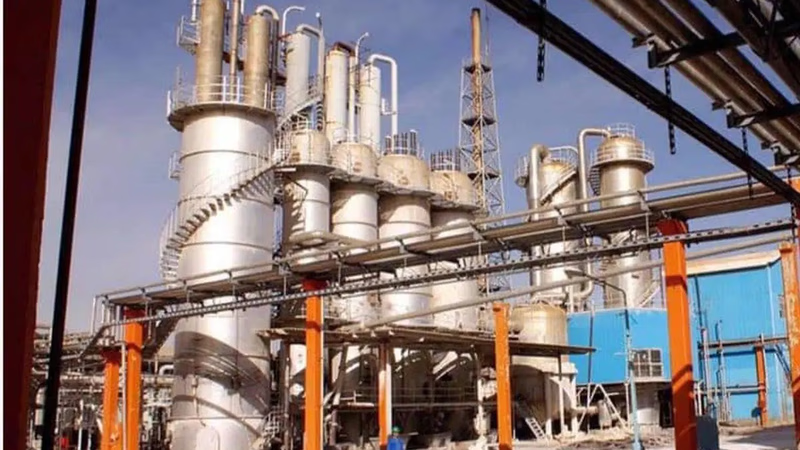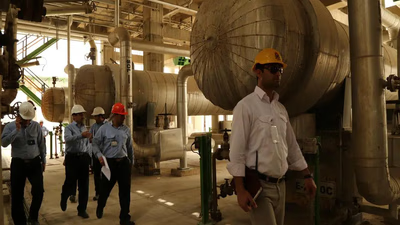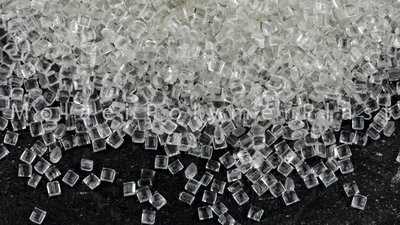
Polybutadiene rubber applications in tires and seals.
PBR exhibits high elasticity and resilience, meaning it can stretch and deform under stress and return to its original shape when the stress is removed. This property is crucial in applications that require flexibility, impact resistance, and the ability to withstand repeated deformations without permanent damage. It makes PBR suitable for products like tires, shoe soles, and vibration dampers. PBR possesses excellent resistance to abrasion and wear. It can withstand friction and contact with rough surfaces without significant deterioration. This property is highly valuable in applications where the material is subjected to constant rubbing or contact, such as tires, conveyor belts, and seals.
PBR is extensively used in tire manufacturing. It is blended with other rubbers, such as natural rubber or styrene-butadiene rubber (SBR), to improve tire performance. PBR enhances the tire's rolling resistance, wet grip, durability, and overall traction on the road. Polybutadiene rubber is utilized in the production of conveyor belts, power transmission belts, and industrial hoses. Its high resilience, abrasion resistance, and flexibility make it suitable for these applications, where resistance to wear and tear and good mechanical properties are essential.
PBR is commonly used in the manufacturing of seals and gaskets due to its excellent sealing properties and resistance to chemicals and fluids. It provides effective sealing in various applications, including automotive, industrial machinery, and aerospace. Polybutadiene rubber's high resilience and damping properties make it suitable for vibration dampers and mounts. It helps reduce vibrations and dampen shocks in automotive suspension systems, industrial machinery, and building structures.
Polybutadiene rubber is used as a raw material to make the core of sandblasting equipment hoses with natural rubber. This type of industrial application is one of the most important and main applications for this material, because the sandblasting process is performed at extremely high pressure; Therefore, the rubber hose body must have sufficient durability and high strength. It can also be used to cover pneumatic and water flow hoses.
Polybutadiene rubber demonstrates good resistance to many chemicals, oils, and fluids. It can withstand exposure to substances that may degrade or damage other materials. This property is beneficial in applications where the material comes into contact with chemicals or fluids, such as seals, hoses, and gaskets used in automotive and industrial environments. PBR provides excellent bonding properties, making it suitable for adhesive and sealing applications. It can form strong bonds with various substrates, contributing to the performance and longevity of adhesives, sealants, and coatings. PBR exhibits good electrical insulation properties, making it suitable for applications in the electrical and electronics industries. It can effectively insulate wires, cables, and connectors, preventing electrical leakage and ensuring reliable performance.
Another application of polybutadiene rubber is to be used as a rubber pad between bricks and railroad tracks. Polybutadiene rubber can be added to the mixture with nitrile rubber, thus increasing the resistance of nitrile rubber to the effects of oil and fat. One of the most attractive uses of polybutadiene rubber is to use it as a raw material for making golf balls. These balls have a plastic structure and are designed in such a way that the central core of the ball is made of polybutadiene rubber and the surrounding layer is surrounded by protective materials.
PBR is employed in the production of shoe soles, particularly in athletic and sports footwear. Its high elasticity, durability, and abrasion resistance make it ideal for providing comfort, cushioning, and traction in shoe soles. Polybutadiene rubber is used as a base polymer in the formulation of adhesives and sealants due to its excellent bonding properties. It provides strong adhesion to various substrates and offers good flexibility and peel strength. PBR is utilized in the manufacturing of sporting goods such as golf balls, tennis balls, and hockey pucks. Its high resilience and elasticity contribute to the performance and durability of these products.
Polybutadiene rubber can be used as a component in coatings and paints to enhance their elasticity, adhesion, and impact resistance. It is often employed in protective coatings for industrial equipment, bridges, and infrastructure. PBR's electrical insulation properties make it suitable for applications in the electrical and electronics industries. It is used in cable insulation, wire harnesses, and electrical connectors. Polybutadiene rubber finds use in a variety of other applications, including automotive components (such as engine mounts and bushings), inflatable products, fuel hoses, O-rings, and vibration isolators.
PBR has a low glass transition temperature, which means it remains flexible and rubbery even at low temperatures. This characteristic is crucial in applications where the material needs to maintain its elasticity and performance in cold environments. Tires, seals, and gaskets used in cold climates benefit from the low-temperature flexibility of PBR. PBR can be easily blended and compounded with other rubbers, polymers, and additives. This versatility allows manufacturers to tailor the material's properties to meet specific application requirements. By blending PBR with other rubbers, such as natural rubber or SBR, the resulting composite can exhibit a combination of desired characteristics, such as improved resilience, durability, or processing properties.
-

The Middle East is a key player in the global polybutadiene (PBR) market, leveraging its abundant petroleum and natural gas resources. The region has developed extensive petrochemical complexes that produce a variety of chemicals and polymers, including PBR. The availability of butadiene, a crucial raw material for PBR production, is ensured by the region"s rich petroleum reserves. This proximity to feedstock sources reduces transportation costs and enhances competitiveness in both regional and global markets. Countries like Saudi Arabia, UAE, and Qatar have established polymerization plants that contribute significantly to the production capacity of PBR. Investments in research and development are ongoing to improve product quality and meet industry demands. Polybutadiene is favored for its water resistance, abrasion resistance, and flexibility at low temperatures, making it suitable for various applications such as tires and seals. However, it has limitations including low heat resistance and unfavorable processability.
The Middle East also focuses on expanding its downstream industries to add value to its petrochemical offerings by processing PBR into finished rubber products. With strategic access to major shipping routes, the region efficiently exports PBR to markets in Asia, Europe, and Africa while also catering to domestic demand driven by growing automotive and construction sectors. "
-

Comprehensive knowledge of polybutadiene rubber (PBR) producers in West Asia is essential for traders to conduct effective market analysis. Understanding supply-demand dynamics, production capacities, and the competitive landscape allows traders to make informed decisions regarding pricing and sourcing. Key producers such as Sadara, Petro Rabigh, Borouge, and Qatar Petrochemical Company play significant roles in the region"s PBR market. With Sadara"s capacity at 150,000 metric tons per year and Petro Rabigh at 130,000 metric tons, these companies are crucial for meeting both domestic needs and export demands. The insights gained from knowing these producers enable traders to optimize their supply chains by identifying reliable suppliers and assessing production capabilities. Additionally, this knowledge opens up opportunities for market expansion by identifying emerging producers and new capacities. The recent establishment of a large butadiene unit is expected to generate significant revenue through exports to countries like Japan and China. Traders can leverage detailed information about PBR producers to stay updated on market trends, negotiate better contracts, and develop risk mitigation strategies against potential supply chain disruptions.
-

Polybutadiene rubber (PBR) is a synthetic polymer formed from butadiene monomers, characterized by its light yellow color and solid state. Its properties vary based on the configuration of double bonds during polymerization, influencing its applications in various industries. Safety considerations are crucial when handling PBR, as it can pose health risks if not managed properly. The material is stable under normal conditions but can catch fire at high temperatures (332 °C) and should be stored away from oxidizing agents. It is insoluble in water but soluble in organic solvents like hexane and toluene. Proper personal protective equipment (PPE) is recommended to prevent skin irritation and respiratory issues from inhaling rubber dust or fumes. Storage guidelines dictate that PBR should be kept in a cool, dry place, ideally below 30 °C, and away from heat sources. Packages must be transported according to shipping standards, ensuring they are placed on wooden pallets and stored in polyethylene containers. Disposal of PBR waste must comply with local regulations to prevent environmental contamination.
-

Polybutadiene rubber (PBR) is known for its high elasticity, resilience, and excellent abrasion resistance, making it ideal for various applications. It is extensively used in tire manufacturing, where it enhances performance by improving rolling resistance and traction. PBR"s durability and flexibility also make it suitable for conveyor belts, seals, gaskets, and vibration dampers in automotive and industrial settings. Its chemical resistance allows it to withstand exposure to oils and fluids, which is crucial for automotive components. Additionally, PBR is utilized in sporting goods like golf balls and tennis balls due to its resilience. The material"s low glass transition temperature ensures flexibility even in cold environments. PBR can be blended with other rubbers to tailor its properties for specific applications, enhancing its versatility across industries.
-

Polybutadiene rubber (PBR) is a synthetic elastomer derived from the polymerization of butadiene, a petroleum-based monomer. It is known for its high resilience, excellent abrasion resistance, and low glass transition temperature, making it suitable for various applications. PBR is predominantly used in the tire industry, accounting for over 70% of its consumption, where it enhances traction and durability. There are two main types of PBR: high cis and high trans, each offering different properties such as elasticity and stiffness. The material can be modified with additives to improve characteristics like oil resistance and heat stability. In addition to tires, PBR is utilized in industrial products such as conveyor belts, hoses, seals, and adhesives. Its versatility allows manufacturers to tailor its properties for specific applications by adjusting molecular structure or incorporating fillers like carbon black. The production process involves polymerization using catalysts and can be executed through various methods including solution or emulsion polymerization.
Overall, polybutadiene rubber"s unique properties contribute significantly to its widespread use across multiple industries. "





